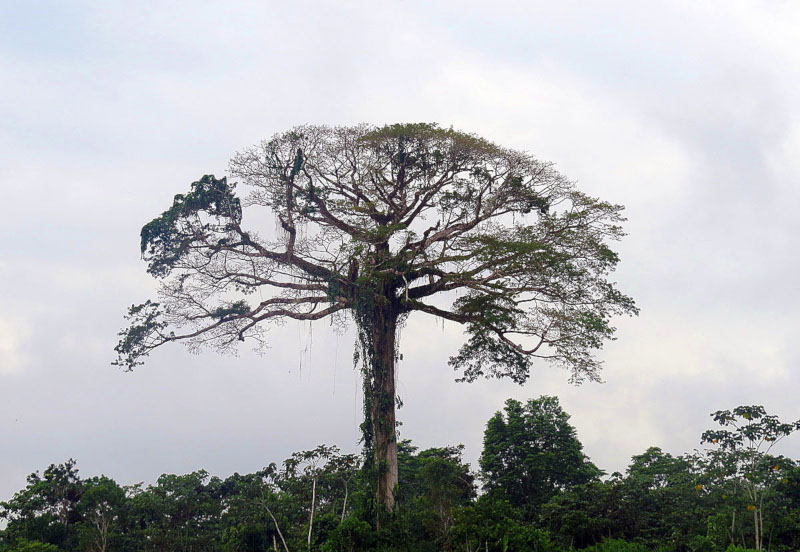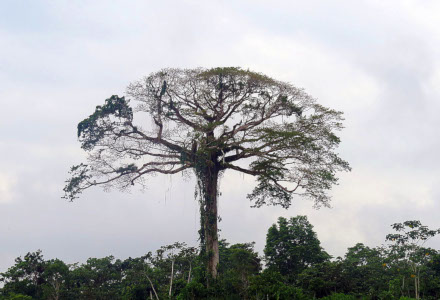
Kapok Tree Facts
- The short term of Kapok Tree forms one of the English language common names for a remarkable variety of plant. The tree also goes by several other alternate names. These include the terms Java kapok, silk-cotton, and samauma, among others.
- Its scientific name, though, remains that of Ceiba pentandra. In Spanish language countries in its range, it further goes simply by the name of the ceiba. By either name, however, it represents a most surprising species, in a variety of ways.
- Within its native range, for one, the local Indigenous Peoples have long used its fibers for hunting. This they wrap around the darts of their blowguns, to increase the efficiency of the devices. This provides them with increased hunting effectiveness.
- Quite thankfully, the population of the Kapok Tree appears to be both stable and sufficient. This fortunate status also seems to hold throughout the entirety of its range. Due to this, the IUCN currently lists it as Least Concern on its Red List.
- Nevertheless, the amazing tree should be considered to facing at least some potential risks. One of these consists of the peril of habitat loss, given its natural territory. The greatest threat it faces, though, like many species, consists of climate change.
Related Articles
Kapok Tree Physical Description
The Kapok Tree remains an impressive variety of flora for a variety of reasons. One of these is sheer height. Individuals of this fascinating tree attain an average height of roughly 240 ft (73 m). Exceptional specimens, though, can reach 252 ft (77 m).
The species also develops very impressive trunks to go with its height. This feature of the tree averages 10 ft (3.1 m) in diameter. Just as with height, however, exceptional specimens occur. Some of these possess trunks measuring an enormous 19 ft (5.8 m) in diameter.
This highly unique tree also evolved very impressive buttress roots. These frequently extend up the trunk as much as 40 – 50 ft (12 – 15 m), and then out from it as much as 65 ft (20 m). Yet they do not stop there. Many extend along the surface of the ground up to 165 ft (50 m).
Many of its larger branches also possess another remarkable feature. Some of these develop a thick covering of relatively large thorns. These same primary branches also reach a great size, often measuring as much as 6 ft (1.83 m) in diameter themselves.
The large leaves further appear in great quantity, averaging 8 in (20 cm) long, and usually forms a thick canopy. Its seed pods develop by the hundreds, and possess a thick, yellowish, fluffy fiber. This feature of the Kapok Tree accounts for one of its names.
- Kingdom: Planate
- Phylum: Angiosperms
- Class: Eudicots
- Order: Malvales
- Family: Malvaceae
- Genus: Ceiba
- Species: C. pentandra
Kapok Tree Distribution, Habitat, and Ecology
Despite being unknown to many people, the awesome Kapok Tree developed as endemic to a relatively wide section of the world. Populations appear naturally from as far north as Mexico, in North America, to as far west as the continent of Africa.
The fascinating species also appears in portions of Central America, the Caribbean, and northern areas of South America. Although it appears in all of these regions, the greatest concentration of its population appears in the range from North America to South America.
It evolved primarily as a tropical plant, as can easily be deduced from its range. Nonetheless, a small percentage of its population grows in temperate climates as well. Those specimens occurring outside of the tropics, however, tend to remains somewhat smaller in size.
It has further played important roles in the cultures of various groups in its range. In the Mayan civilization it represented a sacred symbol in their mythology. The native residents of many cultures still hold various legends involving the tree, or consider it a symbol.
In the rainforests of Asia, it’s now heavily cultivated, especially for its fiber. Modern civilization uses this for such things as stuffing for pillows, toy animals, and such. In the wild, though, it serves as an important natural food source for bats and honey bees.
Species Sharing Its Range
Check out our other articles on 5 Marvelous Mammals of Central America, Vietnamese Mossy Frog, Borra Caves, Leona’s Little Blue, Green Sawfish, Satanic Leaf-Tailed Gecko

